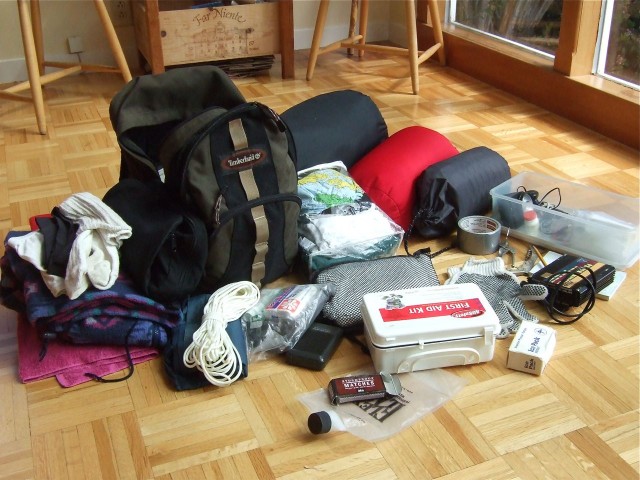The USGS recommends that you split those items up into personal kits that can be easily carried and are easy to reach. In a strong earthquake, debris could be strewn all over the floor. To keep your feet safe after nighttime disasters, the USGS recommends keeping a drawstring bag with a pair of sturdy shoes and a flashlight tied to the foot of your bed. The bigger items can go into a household kit that is easily movable and watertight.
Once you've assembled your kits it's important to make sure that you regularly check them. Has the food expired? Has the water evaporated? How old are those painkillers? If you are someone who needs to regularly take medications, experts recommend swapping out the drugs with fresh ones every month.
2) Make a Plan
Now that you have the basics in hand to survive for three days, it's time to make sure everyone in your household knows what to do in an emergency.
- Identify who are the people you'll need to get in touch with if something happens.
- Identify an out-of-town contact who can serve as a hub for information if you can't reach others in your area.
- Establish a meeting place. Do you know where to go if everyone is spread throughout the area at work and school? SF72 recommends picking a central park or landmark. Don't choose a house in case it's inaccessible.
- Know the locations of utility shutoffs in your home and keep needed tools nearby. Know how to turn off the gas, water and electricity; turn off the gas only if you smell or hear leaking gas.
3) Prepare Your Home
Most damage in earthquakes is caused by shaking. You can do simple and inexpensive things now to help reduce injuries and protect your belongings.
Start by moving heavy furniture, such as bookcases, away from beds, couches and other places where people sit or sleep.
Next examine where art and heavy objects hung on the wall would fall, and possibly shatter. Keep heavy art away from beds or sofas. Make sure you're using closed hooks to keep everything on the wall.
Store heavy items and breakables, like wine glasses, on lower shelves. You can also use earthquake putty, museum wax or quake gel on the bottoms of collectibles, pottery and lamps to keep them from falling.
Secure the top corners of tall furniture into a wall stud, not just drywall. You can use flexible-mount fasteners, such as nylon straps, to allow furniture to sway independently from the wall, reducing the strain on studs.
Learn More
If you're a home owner, you can take the USGS' quiz to see what kind of retrofits your home may need. Houses and apartments that are older and taller are more prone to damage. Find out the kind of earth you're on as well. Liquefaction and land slide zones can pose their own types of problems.
Also, find specific resources in your county:
Alameda County
Contra Costa County
Marin County
Napa County
San Francisco County
San Mateo County
Santa Clara County
Solano County
Sonoma County

